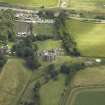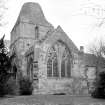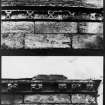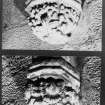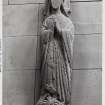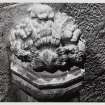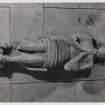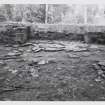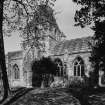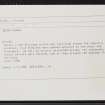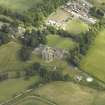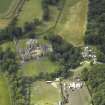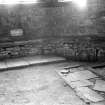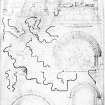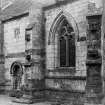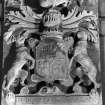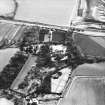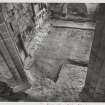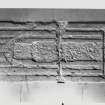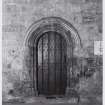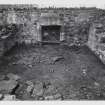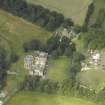Scheduled Maintenance
Please be advised that this website will undergo scheduled maintenance on the following dates: •
Tuesday 3rd December 11:00-15:00
During these times, some services may be temporarily unavailable. We apologise for any inconvenience this may cause.
Seton Chapel
Armorial Panel (17th Century), Burial Vault (15th Century), Collegiate Church (15th Century), Parish Church (13th Century), Bell (16th Century)
Site Name Seton Chapel
Classification Armorial Panel (17th Century), Burial Vault (15th Century), Collegiate Church (15th Century), Parish Church (13th Century), Bell (16th Century)
Alternative Name(s) Seton, Collegiate Church Of St Mary And The Holy Cross; Seton Collegiate Chapel
Canmore ID 54951
Site Number NT47NW 4
NGR NT 41820 75110
Datum OSGB36 - NGR
Permalink http://canmore.org.uk/site/54951
First 100 images shown. See the Collections panel (below) for a link to all digital images.
- Council East Lothian
- Parish Tranent
- Former Region Lothian
- Former District East Lothian
- Former County East Lothian
NT47NW 4.00 4182 7511
NT47NW 4.01 NT 4180 7505 Buildings
(NT 4182 7511) Seton Chapel (Burial Vault) (NAT)
formerly (NAT) Collegiate Church (NR)
OS 6" map, (1967)
The Object Name Book of the Ordnance Survey (ONB) describes the chapel thus: 'An old chaple situated near the N (sic) side of Seton House. It is of Gothic Architecture and still in a state of good preservation. "The old collegiate church of Seton is the finest monument of antiquity in the parish, and is an interesting specimen of Gothic Architecture, built in good taste". The date of the "oldest part is uncertain, but it must have been previous to the year 1390, for in the beginning of the reign of Robert III, Catherine Sinclair of Hermanston, the widow of Lord William Seton "beggit ane yle on the South syd of the parische Kirk of Seyton of fine Castle and founded one preist to serve their perpetuallie". Considerbale additions were subsequently made to this church by the Seton family, amny of whom expended large sums of money in decorating the mausoleum of their races. In 1544 the church was much destoryed by the English during the invasion of the Earl of Hertford. It afterwards suffered severely in succeeding revolutions (OSA 1841).
Name Book 1853
Seton Church, dedicated in the names of St Mary and the Holy Cross, is one of the finest surviving collegiate churches in Scotland (see RCAHMS 1924 plan and illustrations). The unaisled parish church of Seton (dedicated in 1242) is represented by the ruined aisle walls of the nave which continued at least as far as the E walls of the transepts. The foundations under the S transept belong to a chapel built in or after 1434 by Catherine St Clair, wife of the first Lord Seton. The choir and sacristy were largely the work of the third Lord (obit 1478); the fourth Lord vaulted the W part of the choir and founded a college in 1492, and the choir was roofed with stone slabs and furnished by the fifth Lord (obit 1513). His widow Lady Jane Seton added the N transept by 1541 and the S one in 1545. The nave disappeared later, probably after 1580 when the parish was joined with Tranent. The spire was evidently never finished.
By the mid-19th century, the building had ceased to be used as a church and was in use as a burial vault; the windows were unblocked and restored by the Earl of Wemyss in 1878. An extensive programme of excavation and consolidation has been carried out by the DoE since the building came under guardianship in 1948.
C McWilliam 1978; DoE guide 1965; RCAHMS 1924, visited 1923; I B Cowan and D E Easson 1976; S Cruden 1958; 1965; Proc Soc Antiq Scot 1979 (Donations).
Seton Collegiate Church is in good condition.
Visited by OS(BS) 16 October 1975.
Before a new drainage system was installed around the church's exterior, five trenches were opened adjacent to the choir and transepts. As well as several disturbed graves, two reasonably intact burials were located, one of them aligned 180 degrees from the norm.
J H Lewis 1988.
NT 418 751 Archaeological monitoring was carried out in February 2004 during a programme of pipe trenching. The 120m of trenching revealed no features or finds of archaeological significance.
Archive to be deposited in the NMRS.
Sponsor: HS.
D Stewart 2004
NMRS REFERENCE:
Non-Guardianship Sites Plan Collection, DC28584.
Earl of Wemyss
Ministry of Works - Guardianship.
EXTERNAL REFERENCE:
Building Chronicle Vol. 2. February 1st 1857, Page 162. lithograph Plate XXVI.
The National Library of Scotland, Edinburgh, contains, among the 'Uncatalogued MSS of General Hutton', and numbered 37, 38 and 39, Vol. 1, a Plan and Reference, dated 1802, and a View dated 1781, of the Collegiate Church of Seton; a Plan of the old Church of Seton, to the seale of 13 feet to 1 inch, and dated Dunfermline, Deer., 1816 and signed A. Morton; and an illustration of a Monument with a recumbent figure there.
Measured Survey (1866 - 1921)
The architect Sir Robert Rowand Anderson, founder of the Edinburgh School of Applied Art, initiated the National Art Survey of Scotland in 1866 to create a library depicting the best examples of Scottish Architecture from which students could take inspiration. Two bursars, selected from the best draughtsmen trained by the school were appointed each year. In 1903 the Edinburgh School of Applied Art joined with the Board of Manufacturer's School of Art to found the Edinburgh College of Art and the bursaries were continued there. The majority of the drawings were made by architectural students between 1895 and 1906.
The National Art Survey of Scotland Collection comprises around 1500 measured survey drawings by a number of different draughtsmen, many of whom later became well known architects, including Ramsay Traquair and Peter Macgregor. They cover a wide range of buildings from across Scotland including castles, tower houses, churches and urban structures, as well as decorative details, plasterwork and furniture.
Field Visit (9 February 1923)
Within the grounds of Seton House, a modern mansion built on the site of the 16th century palace of George, fourth Lord Seton, 2 miles east-northeast of Preston pans, is an interesting and unusually complete example, as far as it goes, of 15th century Scottish ecclesiastical architecture - the Collegiate Church of Seton (fig.160 [SC 1127347]). The church, which was dedicated in the names of St. Mary and the Holy Cross, was laid out with choir, transepts and nave, but the last division, as in several other instances, has not been built (fig. 161 [plan]). The crossing is surmounted by a square tower terminating in a truncated broach spire, a type of spire not usually found in Scotland. From the north wall of the choir there projects an oblong revestry. The tuskings for the lateral walls of the nave and the weather table for its roof can be seen on the west face of the tower; the other divisions of the church are entire and in an excellent state of preservation, the late proprietor having in 1878 reserved the fabric to be the burial place of his family. Although the structure is homogeneous in design, the various divisions were manifestly not built at one time.
The site was originally occupied by a parish church. To this building Catherine Sinclair of Hermandston,’ widow of William, first Lord Seton who died c. 1409, added a south aisle. Her grandson George, third Lord Seton, who died c. 1478, built the present choir and apparently roofed the eastern rib vaulted portion (‘ biggit the queir of Seytoun, and pendit it sa fer as it is, with rymbraces’) (3). His son, George, fourth Lord Seton, who died in 1508, completed the vaulting of the choir (‘pendit the queir from the rymbrasis but’*) built the vestry (‘revestre’) or sacristy, vaulting and roofing it with stone (3), and rendered the establishment collegiate c. 1493. George fifth Lord, who fell at Flodden 1513, covered the choir roof with stone slabs, provided the choir with glazed windows (‘glaising windois’), paved it and furnished it with stalls (‘daskis’) and ‘cylerings* above the altar’. His work was continued by his widow Lady JanetH epburn, who died in 1558. She built the north cross aisle, removed Lady Catherine Sinclair's south aisle because the side of it was parallel with the side of the church, and rebuilt it in correspondence with the north aisle ‘to make it ane perfyt and proportion at croce kirk’. She likewise built the steeple, which she did not quite finish, and it remains incomplete to this day. In the vestry she had a loft inserted with locked cupboards, and, founding two prebendaries, built ‘thair chalmaris upon voltis’ (i.e. over vaults).
RCAHMS 1924, visited 9 February 1923.
See RCAHMS 1924 115-121 for a full architectural description and historical note.
*‘but’ as in ‘but and ben’; the eastern part of the completed portion was the ‘ben’.
**i.e. a canopy, usually in Scots as ‘sylure’.
(3) History of Seytoun, p. 34-40.
Publication Account (1985)
An unaisled 13th century parish church is represented by the ruinous side walls of a nave that may never have been rebuilt when the collegiate church was begun. By contrast, the foundations of a rectangular building protruding westwards from the south transept are those of a chapel added by Catherine Sinclair of 'Hermandston', wife of the 1st Lord Seton c1434.
The present choir and sacristy were built in part by the 3rd Lord (died c1478); the 4th completed the vaultingand founded the College in 1492; the 5th, who fell at Flodden in 1513, roofed the choir with stone slabs and provided glazed windows, stalls and canopies above the altar. His widow Janet Seton added the north transept in 1541, and in 1545 rebuilt the south transept so as "to make it ane perfyt and proportionat croce kirk". She also "biggit up the steeple as ye see it now to ane grit hight swa that it wants little of compleiting". It seems never to have been completed, however.
Internally, the crossing appears spatially separate from the rest of the church (cf Dunglass, no. 57, and the surviving part of the former Carmelite friary church at South Queensferry, NT 128784). The square ribvaulted tower is also unusual in that the spire to which it is coupled is octagonal. The way in which the faces are alternately widened and narrowed allows it to be called a broach tower-though of a French rather than English type.
As with many late medieval Scottish churches, the east walls of the transepts are windowless; the choir, meantime, terminates in a three-sided, buttressed apse and like the rest of the interior (save for the crossing) is tunnel-vaulted. Around the choir there has been a stone seat; in the south wall is a 15th century piscina or basin for washing out communion or mass vessels and next to it, unusually high up, a single-recessed sedilia or priest's seat.
Next to a second piscina in the south transept, an elaborate Renaissance monument commemorates James, 1st Earl of Perth, husband of Lady Isobel Seton, died 1611. Other 17th and 18th century monuments commemorate Ogilvies, Setons and Wintons.
Though well preserved the church suffered after the Reformation, and by the mid 19th century bays and windows were blocked up and one transept used as a carpenter's shop.
Information from 'Exploring Scotland's Heritage: Lothian and Borders', (1985).
Watching Brief (23 June 2003 - 27 June 2003)
Under its PIC call-off contract with Historic Scotland, Kirkdale Archaeology was requested to monitor the reinstatement of the course of the burn that flows through the guardianship area at Seton Collegiate Kirk. The water flow had been diverted in recent years, so that the burn was reduced to a trickle, resulting in the accumulation of a considerable amount of silt. It was thought that the works might go beyond the water channel, thus requiring archaeological monitoring. The length of the water course to be cleared ran from the A198 to the wall at the N side of the immediate grounds of the church (Fig. 1).
The minimum intervention employed to successfully clear the channel within the water course disturbed nothing of archaeological note.
G Ewart 2003
Sponsor: Historic Scotland
Kirkdale Archaeology
Watching Brief (23 February 2004 - 25 February 2004)
NT 418 751 Archaeological monitoring was carried out in February 2004 during a programme of pipe trenching. The 120mof trenching revealed no features or finds of archaeological significance.
D Stewart 2004
Sponsor: Historic Scotland
Kirkdale Archaeology
Watching Brief (19 February 2007)
NT 418 751 A watching brief was maintained during the excavation of drains running from the north end of the W elevation of Seton Collegiate Church on the 19 February 2007. These were needed to connect new guttering and drainpipes to an existing surface water drain. One of the two trenches partially uncovered the burial remains of two adults and one child. The date of these remains was uncertain and they were left in situ.
Archive to be deposited with RCAHMS.
Funder: Historic Scotland.
OASIS ID: kirkdale1-249628
Fabric Recording (June 2007 - August 2007)
NT 4182 7511 Many of the stones in this collection are fragments of window tracery, dated late 15th/early 16th century. These stones underwent conservation during June to August 2007, and are now laid out in the S transept of the church, below the restored traceried windows from which some of them came. A group of stones now stored in an outdoor shelter beside the church originally came from Seton Palace. These are mostly 18th century in date, and include pediments and heraldic panels.
This and other inventories of carved stones at Historic Scotland,s properties in care are held by Historic Scotland's Collections Unit. For further information please contact at hs.collections@scotland.gsi.gov.uk
Funder: Historic Scotland.
Watching Brief (16 August 2010)
NT 4177 7509 A watching brief was maintained on 16 August 2010 during excavations for the installation of a new handrail by the steps leading down a steep slope to the visitors’ toilet. A possible revetment was partially revealed but not fully excavated. The examination of a small section suggested that it may represent a collapsed revetment. Any future groundbreaking works should take account of the possibility that this structure could extend to the SE and NW of the stairs.
P Fox 2010
Sponsor: Historic Scotland
Kirkdale Archaeology
Measured Survey
Drawings by A Walker Webster in the National Art Survey of Scotland Collection.











































































































